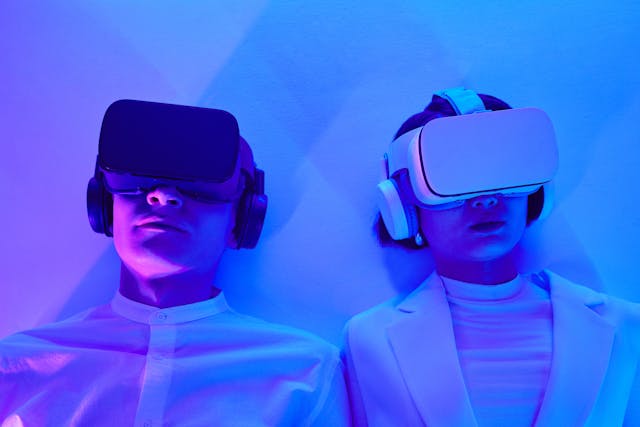The Metaverse: Beyond the Hype—Practical Uses Emerging Now
The word “metaverse” is everywhere these days. It’s often talked about as a futuristic digital world where people can work, play, and socialize in virtual reality. But beyond the hype, the metaverse is already starting to offer real, practical uses that affect how we live and work today.
Let’s explore what the metaverse really is and some of the useful ways it’s being used right now.

What Is the Metaverse?
The metaverse is a shared virtual space created by the convergence of the internet, augmented reality (AR), virtual reality (VR), and other digital technologies. It’s like a 3D version of the internet where users can interact with digital objects and other people in real time.
Unlike purely online games or social media, the metaverse aims to blend digital and physical worlds, creating immersive experiences.
Practical Uses of the Metaverse Today
1. Remote Work and Collaboration
With more people working from home, the metaverse offers new ways to connect beyond video calls. Virtual offices and meeting spaces allow teams to collaborate in 3D environments, making interactions feel more natural and engaging.
2. Education and Training
Virtual classrooms and simulations let students learn hands-on skills without physical limits. Medical students can practice surgeries, and workers can train for dangerous tasks safely in the metaverse.
3. Virtual Events and Socializing
Concerts, conferences, and social gatherings are moving online in immersive ways. Attendees can explore virtual venues, meet new people, and enjoy experiences that go beyond traditional streaming.
4. Retail and Shopping
Brands are creating virtual stores where customers can browse, try on, or customize products before buying. This blend of online and physical shopping offers a richer, more interactive experience.
Challenges and Considerations
While the metaverse has exciting potential, there are important issues to address:
- Privacy and Security: Protecting user data and preventing harassment in virtual spaces is critical.
- Accessibility: Making sure everyone can access and use metaverse technologies, regardless of cost or ability.
- Technology Limits: VR gear can be expensive or uncomfortable, and internet speeds can limit experiences.
- Regulation: Governments and companies must develop rules to govern behavior and content in these new spaces.
What’s Next for the Metaverse?
As technology improves, the metaverse will become more immersive, affordable, and widespread. We’ll likely see more industries adopting metaverse tools to enhance work, education, entertainment, and commerce.
The key will be building safe, inclusive spaces that serve real needs—not just flashy gimmicks.

Final Thoughts
The metaverse is more than just a buzzword or a sci-fi dream. It’s already shaping how we connect, learn, and do business in practical ways. While challenges remain, the metaverse’s emerging uses show it has the potential to become a meaningful part of everyday life—not someday in the future, but now.












